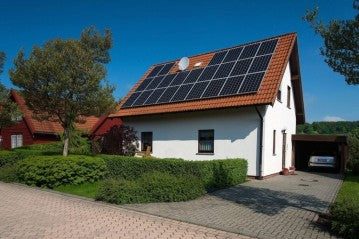
Welcome to the exciting world of solar energy! In the last five years, the solar industry has witnessed a remarkable evolution, making solar energy more accessible, efficient, and cost-effective than ever before. If you are considering adopting renewable energy solutions, this blog will provide you with valuable insights into how solar panels and solar energy have evolved, empowering you to make an informed decision for a brighter and greener future.
How Have Solar Energy Costs Changed Over the Past Few Years?
One of the most significant developments in the solar industry over the past five years has been the drastic reduction in solar panel costs. Thanks to technological advancements and increased adoption, solar panels have become much more affordable, opening doors for many homeowners and businesses to embrace clean energy. Let's delve deeper into this cost transformation.
Solar Panels Cost Less
Historically, one of the main barriers to adopting solar energy has been the high initial investment required to purchase and install solar panels. However, in recent years, the cost of solar panels has seen a remarkable decline. The decrease in manufacturing costs, coupled with improved production techniques, has led to a more competitive market.
Moreover, governments around the world have realized the importance of renewable energy and have introduced incentives, tax credits, and subsidies to encourage solar adoption. These incentives significantly reduce the upfront costs for customers, making solar panels more appealing and economically viable.
Solar Installations Cheaper Than Ever
It's not just the solar panels themselves that have become more affordable; the overall installation costs have also decreased significantly. Solar installation companies have refined their processes and streamlined operations, leading to increased efficiency and lower labor costs.
Additionally, innovations in mounting systems and integration with existing infrastructures have simplified installations. As a result, customers can now expect quicker and hassle-free solar panel installations at more competitive rates.
How Has Solar Energy Efficiency Improved?
While the cost reductions have been remarkable, the improvements in solar energy efficiency are equally impressive. Advancements in various components and technologies have resulted in solar panels producing more energy with better performance and reliability.
New Components
One of the key contributors to enhanced solar efficiency is the introduction of new and innovative components in solar systems. For instance, advanced solar inverters can better convert direct current (DC) generated by the solar panels into alternating current (AC) used in households, minimizing energy losses and maximizing power output.
Solar Panel Technology
Solar panel technology has also undergone significant enhancements. The introduction of monocrystalline and polycrystalline panels has increased efficiency levels. Monocrystalline panels, with their uniform appearance and higher efficiency, are now more prevalent in the market.
Improvements in Solar Panels
Over the past five years, solar panel manufacturers have focused on optimizing various aspects of panel design to boost efficiency. Improved cell architecture, anti-reflective coatings, and enhanced light absorption capabilities have contributed to better energy conversion rates, even in low-light conditions.
Solar Charge Controllers
Solar charge controllers play a vital role in managing the battery charging process and safeguarding the batteries from overcharging or discharging. Recent advancements in charge controller technology have resulted in more intelligent and efficient controllers. These smart controllers maximize battery lifespan and overall system performance.
Conclusion
As we wrap up our journey through the evolution of solar panels and solar energy over the past five years, one thing is clear – the future of renewable energy is brighter than ever. The cost reductions have made solar energy affordable to a broader customer base, while the improvements in efficiency ensure that the investment pays off in the long run.
With solar panels costing less and installations becoming more accessible, there has never been a better time to embrace solar energy. The advancements in solar technology, including new components, improved solar panel designs, and smarter charge controllers, have all contributed to a more sustainable and eco-friendly energy landscape.
If you are considering purchasing solar energy-related products, seize the opportunity now and join the clean energy revolution. By investing in solar panels, you not only contribute to a greener planet but also enjoy long-term savings on your energy bills. Embrace the power of solar energy and be a part of the movement towards a sustainable future.


0 Kommentare